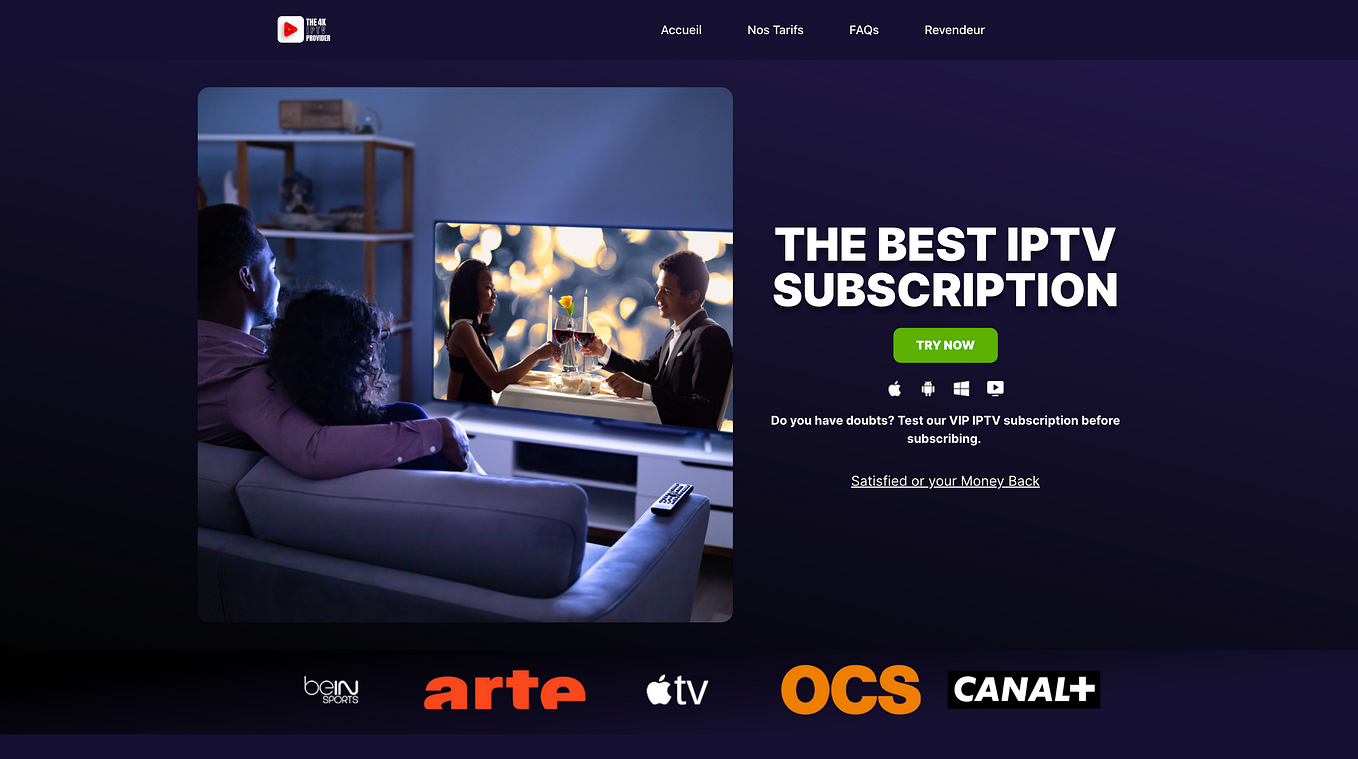Experience Smooth Streaming: Register For Our IPTV Subscription
Exactly How IPTV Functions: A Step-by-Step Guide to Web Protocol Tv Technology
Web Protocol Tv (IPTV) has changed the means we take in television web content, supplying a new realm of possibilities via the power of the web. Recognizing the complexities of how IPTV works can shed light on the modern technology that drives this cutting-edge form of media distribution. From the essential principles of IPTV to the complex procedure of content distribution, each step plays an important duty in guaranteeing a seamless viewing experience. In this overview, we will discover the underlying systems that make IPTV an interesting blend of innovation and amusement.
IPTV Basics
In recognizing IPTV essentials, it is critical to comprehend the fundamental operations of this innovation in providing television web content over the web. IPTV, which means Net Method Tv, utilizes Internet Protocol (IP) networks to send television web content to users' tools. Unlike typical methods of broadcasting tv web content via cord or satellite signals, IPTV streams media with high-speed net connections.

In addition, IPTV enables interactive capacities, such as video on need (VOD) and electronic program guides (EPG), boosting the user experience by supplying more control and versatility in accessing web content. Generally, comprehending the fundamentals of IPTV establishes the structure for exploring its advanced capabilities and the benefits it offers to contemporary tv intake.
Content Delivery Refine
Efficient material distribution in IPTV systems entails a well-structured process that ensures seamless transmission of tv web content over IP networks. The material delivery procedure in IPTV begins with the development of the video content, which is then inscribed into digital style suitable for IP transmission.

Middleware Performance
With the assimilation of middleware, IPTV systems gain improved capability that enhances customer interaction and web content monitoring. One of the crucial functions of middleware in IPTV is to enable individualized individual experiences by supplying features such as interactive program overviews, video-on-demand solutions, interactive advertising and marketing, and customer preferences monitoring.

Device Compatibility
Given the crucial function of middleware in making it possible for smooth interaction and web content administration in IPTV systems, a critical facet to consider is the compatibility of tools used Read Full Report for accessing the IPTV solutions. Device compatibility is essential for making sure a smooth user experience and optimal performance when accessing IPTV web content.
In the context of IPTV, gadget compatibility refers to the ability of a device to effectively connect with the IPTV solution, display content correctly, and sustain the needed procedures and codecs for streaming video clip content over the web. Various tools, such as smart TVs, set-top boxes, smartphones, tablet computers, and computers, might have varying degrees of compatibility with IPTV solutions.
To make certain a seamless viewing experience, it is very important for individuals to pick gadgets that work with the specific IPTV service they are using. Furthermore, IPTV solution suppliers he said must offer assistance for a large range of tools to deal with the varied demands of their user base. By prioritizing gadget compatibility, both users and company can boost the overall IPTV experience.
Quality of Service (QoS)
Considering the crucial duty of maintaining a high standard of efficiency and dependability in IPTV systems, ensuring constant Quality of Solution (QoS) remains a fundamental facet of the user experience. QoS in IPTV describes the ability of the system to supply content with minimal disturbances, high resolution, and quick filling times. To achieve optimal QoS, numerous aspects need to be resolved. Network data transfer is important to support top quality video streaming without buffering or pixelation. Additionally, latency, jitter, and package loss need to be minimized to enhance the watching experience.
Provider use QoS devices such as traffic prioritization, buffering, and error improvement to maintain a steady IPTV solution. By prioritizing IPTV web traffic over less time-sensitive data, suppliers can ensure smooth playback even throughout optimal use hours. browse this site Buffering aids make up for network changes, while mistake improvement techniques boost data stability.
Continuous monitoring and optimization of QoS parameters are necessary to adapt to altering network problems and customer needs. Ultimately, a durable QoS framework is essential for supplying a smooth and pleasurable IPTV experience to individuals.
Conclusion
In conclusion, IPTV runs via the transmission of television material over internet procedure networks. Top quality of Solution plays an important function in preserving the performance and reliability of IPTV solutions - IPTV subscription.